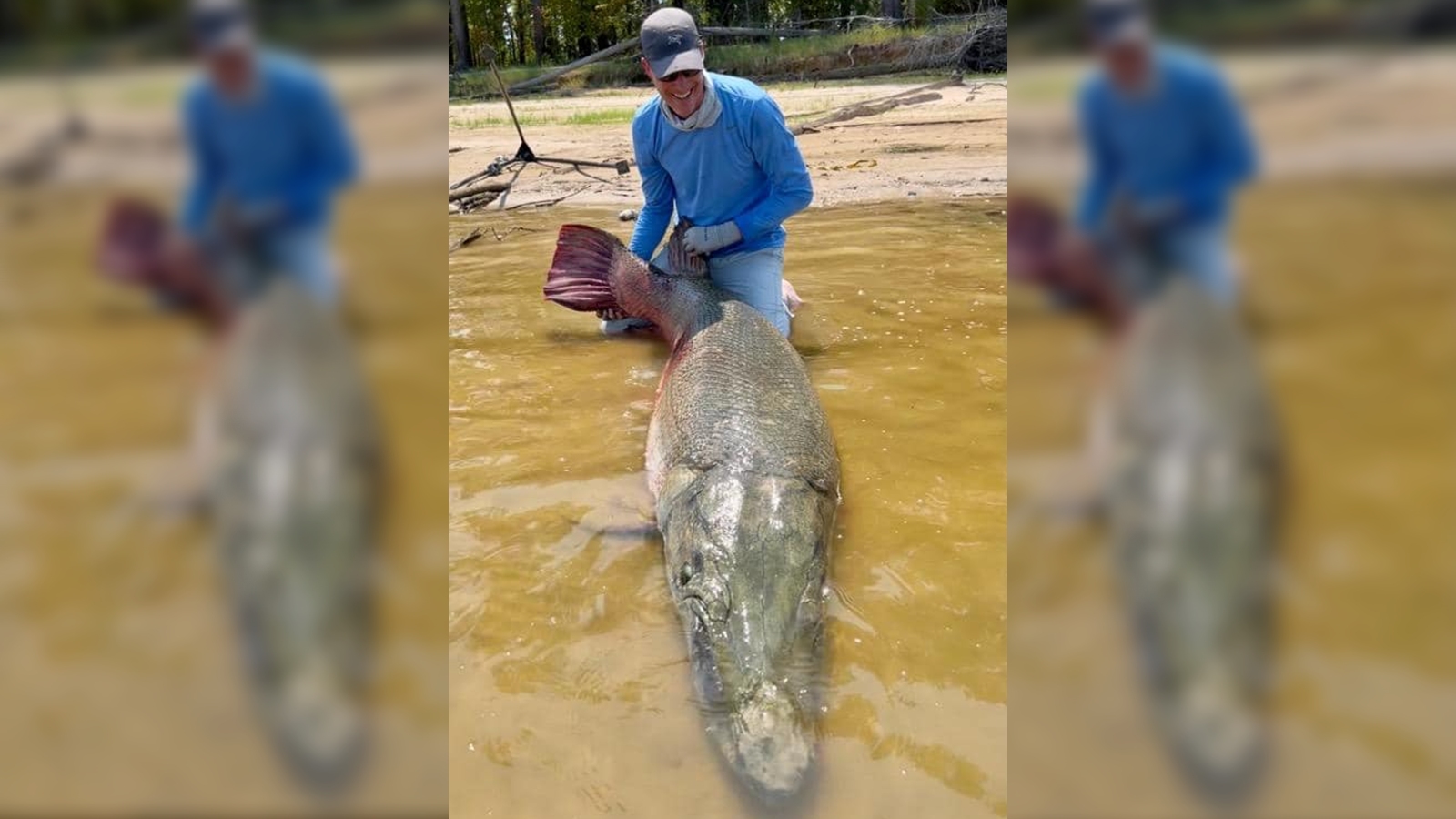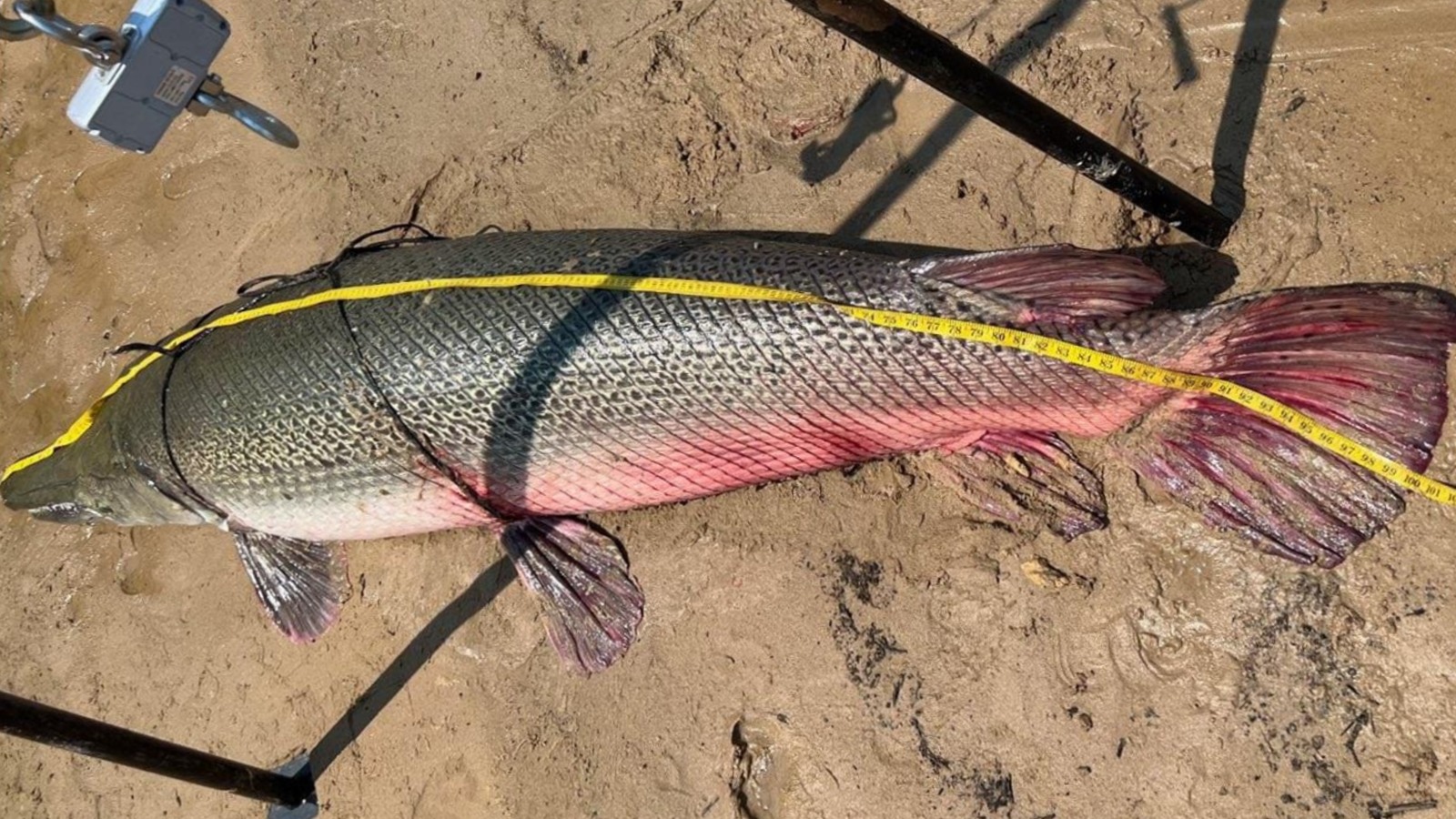'True rarity': Gigantic alligator gar caught and released in Texas reservoir could break 2 world records
Anglers in Texas reeled in a 283-pound alligator gar after a lengthy battle with the enormous fish. Experts say the catch likely breaks a 72-year record.
Anglers recently reeled in a massive 283-pound (128 kilograms) alligator gar after a nearly three-hour tussle on a Texas reservoir, before releasing it back into the murky waters. Experts claim the extraordinary catch could smash a pair of world records dating back to 1951.
Art Weston caught the gigantic gar (Atractosteus spatula) on Sept. 2 at the Sam Rayburn Reservoir in east Texas, with assistance from local boat captain Kirk Kirkland while on board Kirkland's vessel, the "Garship Enterprise." The hefty fish was around 8.3 feet (2.5 meters) long and had a maximum girth of around 4 feet (1.2 m).
It took 2 hours and 45 minutes for Weston to reel in the enormous creature, which left him visibly "shaking" from fatigue, Kirkland wrote in a Facebook post. After weighing and measuring the gar, the pair then released it back into the reservoir, which is connected to the Angelina River.
Weston and Kirkland have submitted evidence of the catch to the International Game Fish Association (IGFA). Their catch is likely to break the IGFA Men's 6-pound (2.7 kg) line-class record and the IGFA all-tackle record (the biggest catch for any line class) for the species, IGFA representatives wrote on Facebook. However, the record has not yet been officially verified.
Related: What's the biggest freshwater fish in the world?
"I applaud Art Weston and Kirk Kirkland for their gargantuan catch," Solomon David, an aquatic ecologist at the University of Minnesota who runs a research lab that studies alligator gars, told Live Science in an email. It is "truly a fish of a lifetime," he added.
Alligator gars that are more than 8 feet (2.4 m) long are very rare, David said. His research group has only ever come across a handful of individuals this long, he added. However, there are records of even larger gars being caught in recent years.
Get the world’s most fascinating discoveries delivered straight to your inbox.
The largest ever recorded alligator gar was a 327-pound (148 kg) behemoth that was captured in Mississippi in 2011, David said. But that individual was accidentally caught in a fishing net and so does not count as an IGFA record, he added.
In May 2022, anglers caught an estimated 300-pound (136 kg) alligator gar in a bayou near Houston. However, the specimen was never accurately measured because the person who caught it had no interest in breaking the IGFA records.
Alligator gars can grow so large because they have an expansive habitat and an abundance of food, David said. They grow very quickly in their early years, reaching up to 2 feet (0.6 m) long in their first year and reaching up to 6 feet (1.8 m) by age 20, he added. Once gars hit 6 feet their growth rate usually slows dramatically, but they can continue to grow for their entire lives, which can possibly last more than 100 years, David said.
Based on the size of the recently caught gar, David suspects that it is somewhere between 50 and 80 years old. However, without its ear bone, or otolith, it is impossible to tell for sure, David said. Otoliths have growth lines, like the rings in trees, that can be used to tell how old a fish is.
The size of the individual also suggests it was a female because females can grow much larger than males, he added.
David praised the anglers for releasing the massive gar back into the water. "Alligator gars of this size are a true rarity, and if we want to continue to see large alligator gars, we need to conserve them, especially the giants," David said. "If we continually remove the largest individuals of a population or species, we remove the genes for large growth, which can eventually result in smaller-sized individuals in a population."

Harry is a U.K.-based senior staff writer at Live Science. He studied marine biology at the University of Exeter before training to become a journalist. He covers a wide range of topics including space exploration, planetary science, space weather, climate change, animal behavior and paleontology. His recent work on the solar maximum won "best space submission" at the 2024 Aerospace Media Awards and was shortlisted in the "top scoop" category at the NCTJ Awards for Excellence in 2023. He also writes Live Science's weekly Earth from space series.




